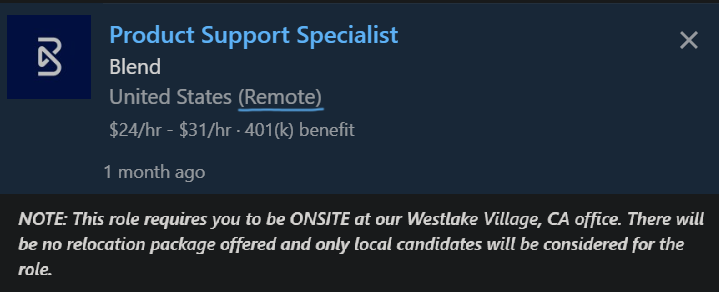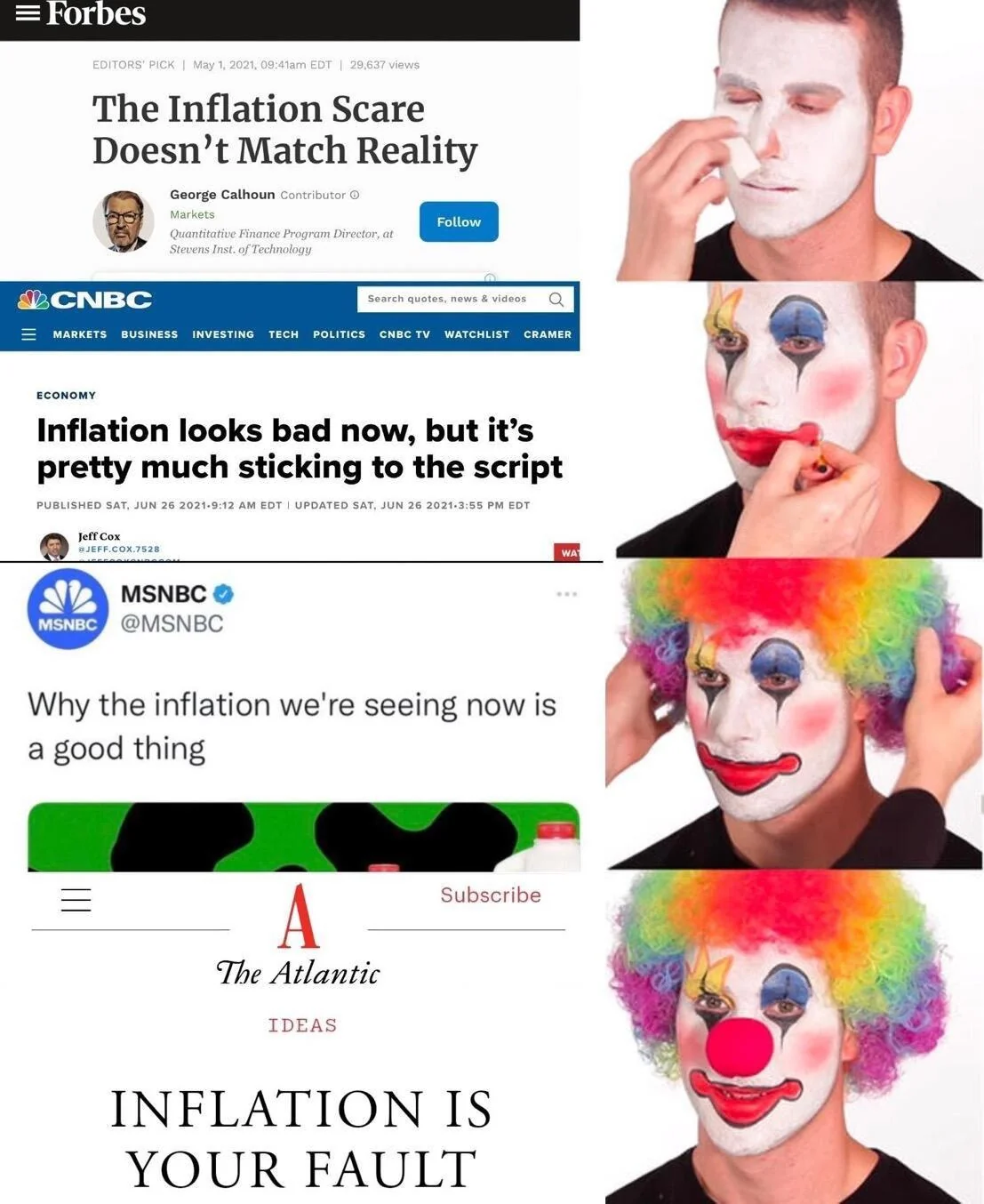Evidence from the criminal trial of Sam Bankman-Fried suggests fraud was built into FTX from the very beginning.
By Zeke Faux and Max Chafkin
March 27, 2024 at 4:00 PM CDT
Sometime between FTX’s collapse and Sam Bankman-Fried’s fraud conviction a year later, a consensus formed about the onetime boy genius of cryptocurrency: His wild, curly hair and beanbag chair naps at the office were largely for show, but his company FTX, which had been used by millions of people to buy and sell digital currencies, was the real deal. The crypto faithful see FTX as an almost-success story—if only its owner hadn’t taken customer money to cover side gambles. As the author Michael Lewis put it on 60 Minutes, “They actually had a great, real business.”
That idea has been bolstered by a twist in the FTX bankruptcy: When the company collapsed, $8 billion in customer funds had vanished, but the lawyers running it now say they expect to recover enough money to pay back everyone in full. Bankman-Fried’s allies have used this to suggest that the customer funds weren’t so much stolen as they were redirected into at least a few surprisingly good investments. “Whatever else might be said about Bankman-Fried, he was a brilliant businessman,” the law professors Ian Ayres and John Donohue wrote in a recent essay arguing he was wrong to even declare bankruptcy. His lawyers have used this argument to call for a light sentence; on March 28 a federal judge will decide whether to go easy on him or send him to prison for 40 years or more, as prosecutors are seeking.
Sam Bankman-Fried, co-founder and former chief executive officer of cryptocurrency exchange FTX, at his arraignment hearing in Manhattan federal court in New York on Dec. 22, 2022, in this courtroom sketch.Photographer: Jane Rosenberg/Reuters
Meanwhile, the crypto industry is acting as if nothing went wrong. The price of Bitcoin is near a record high; also booming are so-called memecoins, a neologism referring to tokens that don’t even pretend to have a real business behind them beyond vibes. The bulk of trading still occurs on exchanges located in countries with extra-light regulation. Crypto boosters have even spun Bankman-Fried’s conviction—along with a guilty plea from the former head of the world’s largest exchange, Binance’s Changpeng Zhao, to criminal charges including laundering money for terrorists—as a positive. “We now have an opportunity to start a new chapter,” Brian Armstrong, the chief executive officer of Coinbase Global Inc., wrote on the social network X. In other words: Don’t worry, it’s safe to buy crypto again.
But Bankman-Fried’s case revealed a version of the former billionaire that’s more disturbing—and especially troubling for an industry bent on sweeping the whole episode under the beanbag. According to an examination of trial testimony, thousands of pages of exhibits and interviews with insiders, Bankman-Fried’s rise appeared to rely on tricking customers, investors and banks almost from the very beginning. His genius, if one can call it that, was recognizing that the mania around crypto would enable him to get away with totally disregarding the rules.
Bankman-Fried sits near a screen showing him shaking hands with Binance CEO Changpeng Zhao in this courtroom sketch from Oct. 10, 2023.Photographer: Jane Rosenberg/Reuters
Imagine crypto trading as a video game. Bankman-Fried certainly did. His gaming addiction was a running theme throughout Lewis’ bestselling book Going Infinite: The Rise and Fall of a New Tycoon and was well known even to his own investors, who caught him playing League of Legends during a pitch meeting. Helping himself to FTX customer money was like turning on invincible mode. It let him gamble like he’d never lose and spend like he’d never go broke. His race to billionaire status was so fast that one tech blogger compared it to a speedrun of The Legend of Zelda.
Bankman-Fried’s trading wasn’t as profitable before he found his cheat code. Back in 2017, when he started a hedge fund called Alameda Research, he relied on personal connections for funding and even then had to agree to pay punishing interest rates. Bankman-Fried, then 25, had worked at the Wall Street firm Jane Street Capital, but his capital came mostly from people he knew from the effective altruism movement, whose adherents believe getting rich quickly and giving money thoughtfully could help solve the world’s ills.
Alameda’s first big investor was an early Skype engineer named Jaan Tallinn, who charged the hedge fund an annual interest rate of 43%. He and a handful of other wealthy effective altruists lent Alameda more than $100 million. But within a few months, Bankman-Fried had suffered a series of big losses, and many of his investors demanded to be paid back. He somehow still cultivated an image of perpetual success and immense wealth, often with a philanthropic bent. This image had the effect of obscuring an essential truth about his empire: For a business that purported to be wildly profitable, it was weirdly low on cash.
“This was something he talked about a lot,” Caroline Ellison, the former CEO of Alameda, said in her court testimony. “He said that we should be trying really hard to find new sources of money.” Ellison pleaded guilty for the role she played in defrauding customers.
Caroline Ellison weeps as she testifies during Bankman-Fried’s trial on Oct. 11, 2023.Photographer: Elizabeth Williams/AP Photo
Until Ellison took the stand, Bankman-Fried’s official story about the founding of FTX had basically stood unchallenged: He started the company in 2019, he often said, because Alameda had been doing a lot of crypto trading, and he thought he could build a better exchange. He pitched FTX to customers as a safe place to buy, sell and store their digital currencies. Ellison offered an alternative explanation: “He said that FTX would be a good source of capital,” she said in court. The implication was that Bankman-Fried started FTX as a means to fund high-risk investments for Alameda. This, to be clear, is the opposite of what he told customers.
Testimony from Bankman-Fried’s former employees, as well as code from FTX’s website introduced as evidence in the trial, showed his pitch to be hollow. For example, the total balance for an “insurance fund” listed on FTX’s website to reassure customers was actually made up using a random number generator. And just months after the exchange opened, FTX created a backdoor for Alameda, a mechanism within FTX’s code known internally as “allow negative.” It overrode FTX’s internal controls, making it possible for Alameda to borrow almost unlimited sums from FTX customers. It also helped that, to deposit money at FTX, customers had to send it to Alameda. They were led to believe the funds would be passed along and held on their behalf. Instead, Alameda in many cases just spent the money.
Bankman-Fried acknowledged most of this at the trial but said none of it was malicious. His former employees on the witness stand, however, suggested he knew the company was short on cash and tried to hide it. FTX co-founder Gary Wang testified that, in late 2019, he overheard his boss telling an Alameda trader it was OK that the fund was borrowing money from FTX customers because the exchange had earned more than enough in trading fees to cover the investments. A few months later, Wang said, he discovered Alameda had already blown through that already questionable guideline.
Gary Wang testifies during Bankman-Fried’s trial on Oct. 6, 2023.Photographer: Elizabeth Williams/AP Photo
The truth was obvious to him: “Alameda was taking customers’ money,” Wang testified.
All the evidence makes clear that FTX wasn’t a good company run by a bad guy. It was a business that was crooked almost from Day 1. That’s a problem for the entire crypto market. Its supporters pitch the products as an alternative to a mainstream financial system they say is rigged against ordinary people. But the conditions that let Bankman-Fried rig markets at FTX remain unchanged. If anything, they may get worse: In a contentious political environment, crypto boosters are spending lavishly to influence lawmakers and try to soften regulations while marketing digital tokens as a sensible choice for novice investors. Which is pretty much what Bankman-Fried did to maximize his fraud.
It wasn’t hard for Bankman-Fried, armed with the cheat code of unlimited customer cash, to make FTX look more successful than it actually was. The company famously spent hundreds of millions of dollars on luxury real estate in the Bahamas and made eye-popping investments in crypto companies—including $50 million for a startup that sells digital copies of cartoon monkeys, $45 million for the investment firm run by former Trump White House spokesman Anthony Scaramucci and $400 million for an attempted bailout of a failing crypto lender. Bankman-Fried also spent lavishly on donations to politicians and celebrity endorsements.
An Instagram post showing Bankman-Fried with singer Katy Perry.Source: SDNY US Attorney’s Office
More important, perhaps, the cheat code allowed FTX to paper over losses that would’ve sunk a normal business. According to Wang, FTX lost about $1 billion in a 2021 incident when a trader exploited a bug in its software using a thinly traded token called MobileCoin. The loss would’ve wiped out all the revenue the exchange had generated since it started, according to internal figures filed as evidence in court, and might’ve sent a version of FTX that wasn’t cheating straight into bankruptcy. Instead, Bankman-Fried instructed employees to count the loss as Alameda’s.
At the trial, Wang recalled Bankman-Fried’s explanation: “He said that FTX’s balance sheets are more public than Alameda’s.” In an interview with Bloomberg Opinion columnist Matt Levine several months after the MobileCoin incident, Bankman-Fried bragged that the company’s risk management was so good that “we’ve never had a day, I think, that there was more money that we lost in blowouts to revenue than trading fees.” This was a lie.
A court image shows Bankman-Fried at his desk at FTX.Source: SDNY US Attorney’s Office
Around the same time, Bankman-Fried was negotiating with venture capitalists to raise money for FTX. He sent them reports that omitted the giant loss. “Congrats on the amazing exchange performance,” Zack Rosen of Ribbit Capital wrote in response to Bankman-Fried’s pitch. In July 2021, FTX raised $900 million. A former employee involved with the investment, who asked not to be identified because of the company’s ongoing litigation, says the deal would never have closed if Bankman-Fried hadn’t covered up the loss.
Even with the influx of venture capital, Alameda borrowed more and more from FTX. One of the big costs was buying out an investment that Binance had made in FTX so Bankman-Fried could disentangle his company from a rival. “We don’t really have the money for this,” Ellison testified that she told Bankman-Fried.
“That’s OK,” Bankman-Fried replied, according to Ellison. “We have to get it done.” Ellison testified that they used an additional $1 billion of FTX customer deposits to close the deal with Binance.
Ellison points out Bankman-Fried during his fraud trial on Oct. 10, 2023.Photographer: Jane Rosenberg/Reuters
Later that year, as crypto markets boomed, Alameda borrowed even more to make big bets on newly minted digital currencies known within the industry as “shitcoins.” As Ellison once put it in a post on Twitter, “figure out when the market is going to go up and get balls long before that.” Alameda was also investing in so-called yield farming, which in practice often amounted to lending money to Ponzi schemes and hoping to get out before they collapsed. There also was a $150 million expense Ellison listed as “the thing” on a report she prepared. The thing, prosecutors alleged, was “one of the largest foreign bribes ever paid by a US person,” in this case to Chinese government officials.
In mid-2021, before Bankman-Fried’s spending spree really got going, Ellison warned him that Alameda’s debts were looking risky. Bankman-Fried asked her to invest an additional $3 billion in venture capital, even though Alameda had already helped itself to at least $2 billion from FTX customers and borrowed $9 billion from other lending firms. The hedge fund’s biggest asset was a giant pile of cryptocurrencies that Bankman-Fried had either created himself or was closely associated with. Ellison calculated that without these so-called Sam coins, FTX owed almost $3 billion more than it had. She testified telling Bankman-Fried that if they made the investments, and the market crashed and lending firms asked for their money back, Alameda would go broke and FTX would fail.
What happened next is, well, they made the investments, the market crashed, Alameda went broke and FTX failed. Before long, Bahamian police were knocking on the door of Bankman-Fried’s $30 million penthouse.
After FTX filed for bankruptcy, Bankman-Fried didn’t know what to do. He wrote a list of potential strategies, including: “File the doc with problems about the Chapter 11 process” (Option 1); “go on Tucker Carlsen [sic]” and “come out against the woke agenda” (Option 3); “Have Michael Lewis interview me” (Option 11); “radical honesty” (Option 15). Ultimately he settled on a version of Option 1, blaming the bankruptcy attorneys, and Option 11, finding a sympathetic journalist. He didn’t try Option 15.
Bankman-Fried first said he lost the money through a series of sloppy mistakes. He claimed he wasn’t heeding warning signs because it felt like he had “infinity dollars.” “I f---ed up,” he wrote on Twitter and in testimony he planned to deliver to Congress. Then, in interviews and social media posts, he complained he’d been victimized by “strong-arming” lawyers who’d manipulated him into filing for bankruptcy, which he called “maybe my single biggest f---up.” In a series of unpublished essays titled “Inception,” after the Christopher Nolan movie, he even argued that Sullivan & Cromwell, the law firm in charge of the FTX bankruptcy, had manufactured the narrative that he stole customer funds. (He gave the essays to a crypto influencer, Tiffany Fong, who passed them on to the New York Times.) “They’ve played it incredibly well,” Bankman-Fried wrote of the law firm, which has defended its conduct as proper. “Were it not destructive to just about everything I care about in life, I would tip my cap to them.”
This argument found a willing audience among some FTX victims eager to blame anyone for what happened, helped spur a class-action lawsuit and was presented in Lewis’ book as a plausible explanation for what went wrong at FTX. Sullivan & Cromwell will get paid hundreds of millions of dollars for its work on the bankruptcy, a figure that critics have suggested is excessive. On the other hand, those fees are starting to look like money well spent, since FTX’s bankruptcy attorneys said in January that they expect to recoup enough money to pay customers back in full.
Bankman-Fried’s attorneys seized on this announcement to offer an audacious counterfactual narrative they hoped would get him a more lenient sentence. “The truth is, there were never losses,” Marc Mukasey, the lawyer representing Bankman-Fried at his sentencing, wrote in a March 19 letter to the judge. “The money has always been available. Assets remain. Each victim quoted in the government’s opposition will receive 100 cents on the dollar—plus interest. This would be impossible if the estate’s assets had disappeared into Sam’s personal pockets.”
Bankman-Fried sits with his lawyers Torrey Young and Marc Mukasey on Feb. 21, 2024, as he appears in court for the first time since his November fraud conviction.Photographer: Jane Rosenberg/Reuters
The claims weren’t quite as novel as they might’ve seemed. Fraudsters often insist, as Bankman-Fried has, that they would’ve made all the money back if only they’d been allowed to keep going. And bankruptcy lawyers are often successful in eventually cleaning up the messes they find, even in cases of massive fraud. For instance, the administrators overseeing the Bernie Madoff bankruptcy have returned about 90% of clients’ initial investments.
In the case of FTX, recovering assets rests largely on long-shot bets Bankman-Fried made using customer money that wasn’t his to gamble with, such as a $500 million investment in the artificial intelligence startup Anthropic PBC that’s likely now worth more than $1 billion. The biggest factor is crypto prices. FTX’s debts to its customers were fixed in dollar terms on the day the company filed for bankruptcy, when prices were at a low point.
The estate quickly found about $1 billion worth of Solana tokens and $600 million of Bitcoin and related products, as well as hundreds of millions of dollars of other coins. It hired a manager for the assets: Galaxy Digital, run by Mike Novogratz, a Wall Streeter-turned-crypto enthusiast so committed to the cause that he once got the logo for a token tattooed on his shoulder. (That particular token was later found to be a Ponzi scheme.) Predictably, Novogratz’s firm didn’t try to unload FTX’s crypto right away.
Lucky for everyone involved, prices started going back up. The excitement was driven in part by anticipation that US regulators would approve Bitcoin exchange-traded funds, opening that cryptocurrency to a novel group of potential buyers. Bitcoin started rising, along with the prices of other widely traded tokens including Dogecoin, the original memecoin, which has roughly doubled in value since early 2023. New joke coins that trade on the Solana blockchain emerged, seemingly competing to be as stupid or offensive as possible: dogwifhat (the Dogecoin dog but with a hat), Pepe (the symbol beloved by White nationalists) and for those who found that last one too subtle, a token named simply NAZI. Some of them soared to market caps exceeding $1 billion. The price of Solana itself has climbed more than tenfold since FTX’s failure.
The runup means that, on paper, zombie FTX may have gained as much as $10 billion on its Solana bet, though many of the holdings are locked up and can’t be sold for a few years. FTX’s stash of Bitcoin and other tokens likely gained an additional $3 billion at least, based on filings in the bankruptcy case. If the estate is able to sell them all while the market is hot, it’ll have a reasonable claim to the title of greatest crypto trader in history.
The bankruptcy administrator, John Ray III, tried to downplay this achievement in a letter to the judge in Bankman-Fried’s criminal case. “Even taking into account the potential for achieving anticipated recovery levels, which is by no means assured,” he wrote, “customers still will never be in the same position they would have been had they not crossed paths with Mr. Bankman-Fried.”
Bankman-Fried leaves a New York federal courtroom in handcuffs on Aug. 11, 2023. A judge revoked his bail after concluding the former CEO had tried to influence witnesses.Photographer: Elizabeth Williams/AP Photo
Unfortunately, the conditions that allowed people to fall for schemes such as Bankman-Fried’s remain: a massive, speculative and largely unregulated industry rife with fraud and manipulation—and a credulous public eager to bet real money in search of a big score.
Bankman-Fried is still doing what he can to spread the hype. Recently, one of the guards at the Brooklyn prison where he’s being held asked him for crypto trading advice, according to a person with knowledge of the interaction, who requested anonymity citing legal concerns. Bankman-Fried suggested the guard sell his XRP tokens and buy Solana.













>how do you transfer back to a broker
Lol
> sell a few
Excuse me? We don't do that here.
> but when you need to sell some shares for funds
If you don't want true ownership, then that's your own fault when you get nothing at the end ;). You can sell directly out of CS without issue (as they have their own broker that they use), but TBCH, I'm fairly certain you already knew that.